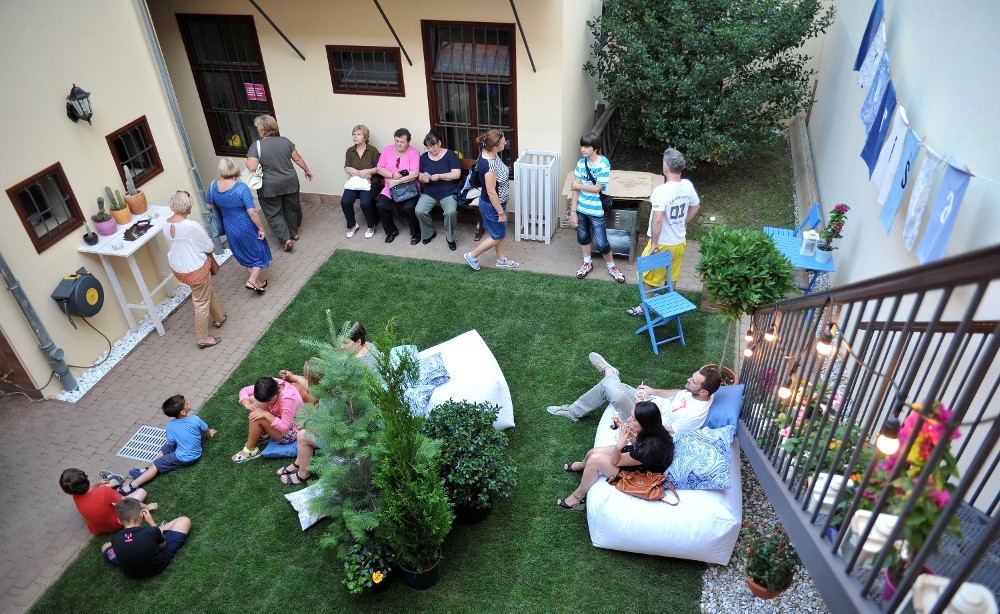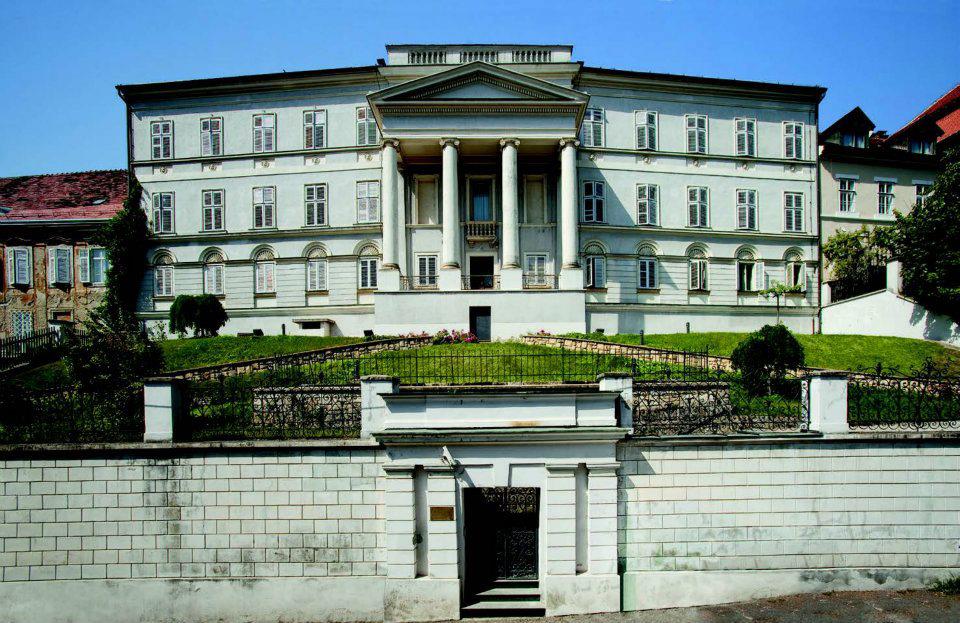One of the most awaited events of the season, The Courtyards, is starting this Friday, July 15th, and we wanted to give a little background for each yard, garden and atrium presented on the event. The Courtyards opens up hidden yards in the old town that have a long history behind them, not just of families and people who lived there, but of the city and the entire nation, as it was often there that our history was made.
As most of the yards are not usually opened to the public, it is no wonder that everyone from Zagreb (and farther) is super excited about these ten days in which they to get a chance to relax, hang out, have drinks and listen to music in places that represent a common heritage in such a beautiful, yet mundane way.
The seven courtyards that open their doors this year are:
Balbi Palace, Demetrova street 11
Before the palace was turned into an Old Church Slavic Institute in 1950, it was a home to the baron family Balbi. The baroque palace’s last private owner, baroness Kornelija Babi, was a well known and respected figure among the citizens, still in memory of the oldest locals, but not for her aristocratic endeavors, but for her art. She made the most beautiful decorative rope binders of her time. Many of those binders are still kept in the Museum of the City of Zagreb. The palace is closed up with wings on both sides of the main structure and an old horse stables turned building on the far side. In it is the garden with the only working well in Zagreb.
Erdödy-Drašković Palace, Opatička street 29
The palace holding family names of two clans that were some of the most influential noblemen, warriors and priests throughout Croatian history is today a home to National Archives. It holds all of history (and secrets) of Zagreb in it, literally. The archives are usually opened to public and you could spend hours exploring the past, alas, only if you know how to read Croatian or Hungarian. To enjoy the garden in the palace’s center, you don’t need to speak any languages. It’s final celebrity resident (19th century) was the first Croatian opera primadonna, countess Sidonija Erdödy Rubino. In the 20th century it was used as a gentry residential area and people would hold chickens and dry laundry in it. Unlike the aristocracy, the gentry was more practical with their space. When the Archives moved in, the garden was once again turned into its former, famed aristocratic aesthetic.
Meštrović Atelier, Mletačka street 8
A garden holding works of art many world museums would be glad to have belonged to the world famous sculptor Ivan Meštrović and his family. Meštrović had to flee Croatia during WW2, as he was in danger of being put away by Nazis for refusing Hitler’s invitations to visit Berlin. After the war he still did not want to come back and live in a communist country, but he did briefly return in the 50s. He spent the rest of his life mostly in the US. His daughter and son had died before him, so he left his estate and works in it to Croatia. The atelier has two open spaces, the Mediterranean stye atrium and hidden inner garden with the master artist’s sculptures placed all around.
Private yard of the Milovac family, Opatička street 19
The yard, now in possession of Milovac family, has a special place in the musical history of Croatia. Famous composer Rudolf Matz was born there, and that’s interesting in of itself, but it was also a place where Hedviga Ban used to live, the love of Vatroslav Lisinski‘s life. It is in that garden where Lisinski wrote the first Croatian opera Ljubav i Zloba (Love and Wickedness) the pinnacle of creativity during the Illirian movement that wanted to build a national identity under the Hungarian oppression. He wrote it because he needed to create something significant before feeling worthy of proposing to her. The main female character was played by their neighbor, countess Sidonija.
Tko pjeva zlo ne misli, private yard, Basaričekova street 11
The yard that has the most significance to the locals even though no barons and countesses lived there, no grand love stories were played out in it, no great historical moments. It was the setting of Tko Pjeva Zlo ne Misli (Those Who Sing Think not of Sin), a film that every local adores, depicting everyday people in Zagreb during the 1920s. The film played as a lighthearted musical comedy but tackled darker themes like adultery, marriage out of interest and societal hypocrisies of the time with great love for every character from the authors. The film captured the essence of Zagreb and that seemingly ordinary courtyard was the heart of the film.
Croatian Institute for History, Opatička street 10
A old palace upgraded and redecorated in the late 1800s by the father of modern Zagreb Izidor Kršnjavi using the blueprints from the builder of Croatian metropolis Herman Bolle, the palace represents the great rise and modernization Zagreb underwent at the turn of the 19th century, with signatures of two of the most important modernists of the time. The palace had become a symbols of civility, culture and history of Zagreb. It has two yards, the front one with a rosary and a fountain that you enter trough an impressive wrought iron gate, and the hidden backyard with green cascades falling on Radićeva street with a unique view of the city.
House Frigan, Opatička street 27
Frigan house holds a special place in Zagreb’s and Croatia’s modern history. The house was owned by the first mayor of Zagreb, Janko Kamauf, which he later sold to his (somewhat) democratically chosen successor, Alojzije Frigan, and it is the best preserved masterwork of architect Aleksandar Brdarić, a cultural monument and a representation of the best Biedermeier architecture in the city. The inner courtyard is not as flashy as others as it follows the aesthetics of the simplistic gentry style, but it’s still the same as in 1840, capturing a moment in time when the aristocracy was starting to fade and the gentry class was taking up more important roles and statuses in society.
(We don’t have a photo as the courtyard was sealed from the public thus far, and will be opened exclusively for the Courtyards event)







